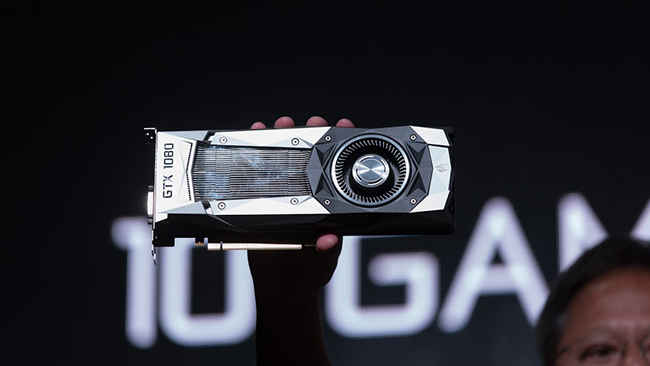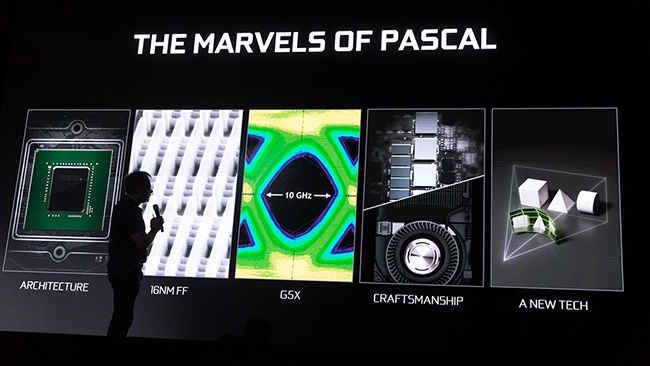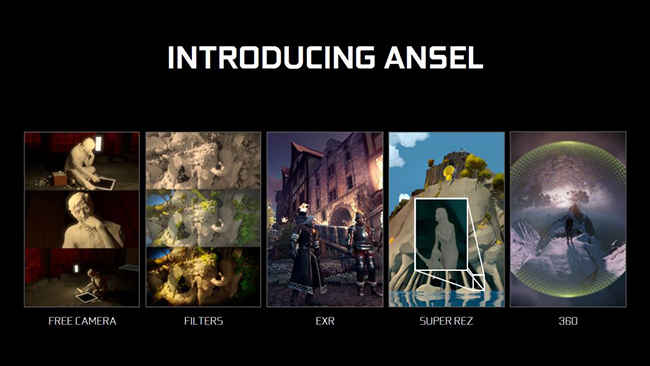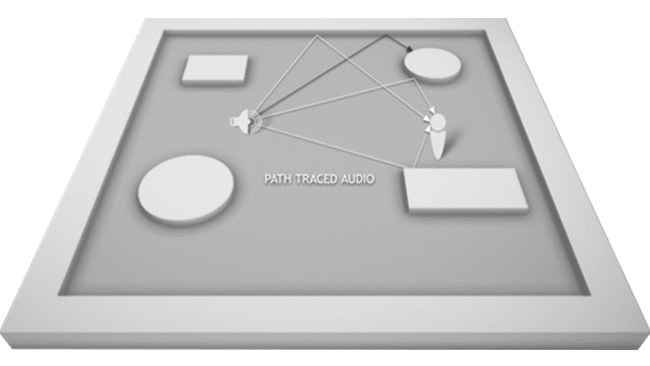NVIDIA GTX 1080 and GTX 1070 revealed

GTX 1080 to cost $599 and GTX 1070 to cost $379, both faster than TITAN X for half the price
NVIDIA decided to not wait for COMPUTEX this year to announce the arrival of their latest Pascal graphics cards. NVIDIA’s first consumer cards are going to be the NVIDIA GTX 1080 and the NVIDIA GTX 1070. The cards are priced at a slightly higher price than what the NVIDIA GTX 980 and NVIDIA GTX 970 launched for – $599 (Rs. 40,000) for the NVIDIA GTX 1080 and $379 (Rs. 25,500) for the NVIDIA GTX 1070.
NVIDIA claims that both cards are significantly more powerful than the existing flagships, i.e. the NVIDIA TITAN X and the NVIDIA GTX 980 Ti. This increment is credited to the fact that Pascal GPU microarchitecture has moved to a 16nm FinFET manufacturing process with the GP104 and makes use of GDDR5X memory. GDDR5X is very similar to GDDR5 but overcomes one of the major hindrances of the older memory standard by doubling the prefetch rate. That’s a slightly convoluted way of saying that the bandwidth gets doubled. On the NVIDIA GTX 1080, this works out to a mind-boggling 10Gbps memory clock. The NVIDIA GTX 1070 will, however, stick with the old GDDR5 standard. Here's what we know about the specifications so far.
| GTX 1080 and GTX 1070 Specifications | |||||
| GTX 1080 | GTX 1070 | TITAN X | GTX 980 | GTX 780 | |
| CUDA Cores | 2560 | 2080? | 3072 | 2048 | 2304 |
| Texture Units | NA | NA | 192 | 128 | 192 |
| ROPs | 64 | NA | 96 | 64 | 48 |
| Core Clock | 1607MHz | NA | 1000MHz | 1126MHz | 863MHz |
| Boost Clock | 1733MHz | NA | 1075MHz | 1216MHz | 900Mhz |
| TFLOPs (FMA) | 9 TFLOPs | 6.5 TFLOPs | 7 TFLOPs | 5 TFLOPs | 4.1 TFLOPs |
| Memory Clock | 10Gbps GDDR5X | 7Gbps GDDR5? | 7Gbps GDDR5 | 7Gbps GDDR5 | 6Gbps GDDR5 |
| Memory Bus Width | 256-bit | NA | 384-bit | 256-bit | 256-bit |
| VRAM | 8GB | 8GB | 12GB | 4GB | 3GB |
| TDP | 180W | NA | 250W | 165W | 250W |
| GPU | GP104 | GP104 | GM200 | GM204 | GK110 |
| Transistor Count | 7.2B | 7.2B | 8B | 5.2B | 7.1B |
| Manufacturing Process | TSMC 16nm | TSMC 16nm | TSMC 28nm | TSMC 28nm | TSMC 28nm |
| Launch Price | $599 | $379 | $999 | $549 | $649 |
While the cards are slightly higher priced, they come with the added advantage of being more energy efficient thanks to the smaller manufacturing process. The extent by which energy efficiency has increased can not be calculated at this juncture as NVIDIA has not released full specifications. They’ve have, however, claimed that the NVIDIA GTX 1080 will crunch out 9 Teraflops of single-precision floating point calculations and the GTX 1070 will push 6.5 TFLOPS. If we look back at the TITAN X, it only did 7 TFLOPS, so this is indeed a massive 28.6 per cent increment in performance. However, gaming performance will not scale in a similar fashion as there are a lot more variables on the table.
The newer Pascal architecture allows for better clock speeds as well. The GTX 1080 will reportedly be clocked at 2144 MHz and that too, on air cooling. This means there’s definitely plenty of headroom for overclocking. And speaking of cooling, NVIDIA will be releasing a series of limited edition cards called “Founders Edition” which will only be available from their own site for a limited time.
And now for the software
Aside from the hardware aspects, there have been some improvements on the software front too. Ansel, is one of the new changes which allows you to move the camera freely within a game to take screenshots. If only this were introduced before Prince of Persia: Warrior Within, it would have made many a gaming sessions a lot less frustrating. And fans of Instagram will be delighted to know that they’ve included filters as well. Games like The Division, No Man’s Sky and last year’s favourite – The Witcher 3 will support this feature at launch.
Then there is NVIDIA VR Works Audio and ‘Simultaneous Multi-Projection’ for VR applications. NVIDIA VR Works Audio allows for 3D audio which basically allows gamers to experience sound as it interacts with the environment. So you can look forward to realistic audio bouncing of different material textures in game. And then there’s Simultaneous Multi-Projection which helps with VR run on a multi-monitor setup. While this is a niche use case, it will soon cease to be so with the advent of cheaper VR HMDs. Simultaneous Multi-Projection might result in HMDs using three display screens instead of two to create a more natural looking render.
Mithun Mohandas
Mithun Mohandas is an Indian technology journalist with 10 years of experience covering consumer technology. He is currently employed at Digit in the capacity of a Managing Editor. Mithun has a background in Computer Engineering and was an active member of the IEEE during his college days. He has a penchant for digging deep into unravelling what makes a device tick. If there's a transistor in it, Mithun's probably going to rip it apart till he finds it. At Digit, he covers processors, graphics cards, storage media, displays and networking devices aside from anything developer related. As an avid PC gamer, he prefers RTS and FPS titles, and can be quite competitive in a race to the finish line. He only gets consoles for the exclusives. He can be seen playing Valorant, World of Tanks, HITMAN and the occasional Age of Empires or being the voice behind hundreds of Digit videos. View Full Profile








